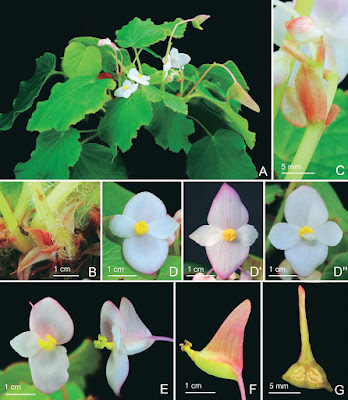[Most Recent Entries] [Calendar View]
Friday, April 29th, 2022
| Time | Event | ||
| 6:28a | [Paleontology • 2022] Giant Late Triassic Ichthyosaurs from the Kössen Formation of the Swiss Alps and Their Paleobiological Implications
ABSTRACT The Late Triassic was populated by the largest ichthyosaurs known to date, reaching lengths of over 20 m. Recent discoveries include the remains of giant ichthyosaurs from the Austroalpine nappes of the eastern Swiss Alps. The finds come from the lower two members of the Kössen Formation (late Norian to Rhaetian). The material consists of a very large tooth lacking most of the crown from the Rhaetian Schesaplana Member, a postcranial bone association of one very large vertebra and ten rib fragments also from the Schesaplana Member, and an association of seven very large vertebral centra from the upper Norian to lower Rhaetian Alplihorn Member. These associations represent the only published partial skeletons of large to giant ichthyosaurs younger than middle Norian. We compare the material with the two largest ichthyosaurs known from partial skeletons, Shonisaurus popularis (15 m) and Shastasaurus sikkanniensis (21 m) from the late Carnian (ca. 230 Ma) of Nevada and the middle Norian (ca. 218 Ma) of British Columbia, respectively. The incomplete tooth confirms that at least some giant ichthyosaurs had teeth. Based on their proportional differences, the two bone associations may represent two different taxa of Shastasaurus-like ichthyosaurs. The larger and geologically younger specimen may have been nearly the size of S. sikkanniensis, and the smaller that of S. popularis. These giant ichthyosaurs from the eastern Swiss Alps indicate that such ichthyosaurs also colonized the western Tethys. The finds also unequivocally document that giant ichthyosaurs persisted to the latest Triassic. SYSTEMATIC PALEONTOLOGY ICHTHYOSAURIA Blainville, 1835 ICHTHYOSAURIA indet. Material—One very large tooth lacking most of the crown, PIMUZ A/III 670. Horizon and Locality—Rhaetian Schesaplana Member, Kössen Formation from Gretji, from scree 900 m southwest of Chrachenhorn Mountain, Davos-Monstein, Canton Grisons, eastern Swiss Alps, Switzerland (coordinates 46.6850323N, 9.8036022E). MERRIAMOSAURIA Motani, 1999 SHASTASAURIDAE Merriam, 1902 sensu Ji et al., 2016 Definition—The last common ancestor of Shastasaurus and Besanosaurus, and all its descendants (from Ji et al., 2016). SHASTASAURIDAE sp. A Material—Specimen PIMUZ A/III 744, associated partial skeleton (Fig. 3) consisting of a very large anterior or middle dorsal vertebral centrum (PIMUZ A/III 744a) and eight distally incomplete dorsal ribs and two rib fragments (PIMUZ A/III 744b-l). The centrum is strongly tectonically deformed in the transverse plane. The ribs also appear tectonically deformed. Horizon and Locality—Rhaetian Schesaplana Member, Kössen Formation. East side of Fil da Stidier ridge, Corn da Tinizong Mountain, Filisur, Canton Grisons, eastern Swiss Alps, Switzerland (coordinates 46.6204533N, 9.6816551E). P. Martin Sander, Pablo Romero Pérez de Villar, Heinz Furrer and Tanja Wintrich. 2022. Giant Late Triassic Ichthyosaurs from the Kössen Formation of the Swiss Alps and Their Paleobiological Implications. Journal of Vertebrate Paleontology. e2046017. DOI: 10.1080/02724634.2021.2046017 Huge new ichthyosaur, one of the largest animals ever, uncovered high in the Alps | ||
| 9:27a | [Botany • 2016] Begonia togashii (Begoniaceae, sect. Petermannia) • A New Species from Central Myanmar
Begonia togashii Nob. Tanaka & C.-I Peng (Begoniaceae), a new species from central Myanmar is described and illustrated. The presence of a rhizome, basal protandrous staminate flowers and distal pistillate flowers, 2-locular ovaries and placentas with two branches place it in sect. Platycentrum A. DC. It is somewhat similar to Begonia thomsonii A. DC., which was described from India, but is also in northern Myanmar. Begonia togashii, however, is distinct in having sub-symmetric basal leaves with a glabrous upper surface, 3-tepalled carpellate flowers and glabrous capsules. Thus far B. togashii is known only from Myanmar. Key words: Begonia, Begoniaceae, new species, Myanmar, sect. Platycentrum Begonia togashii Nob. Tanaka & C.-I Peng, sp. nov. Distribution. Known only from Mandalayand Shan State, central and eastern Myanmar. Etymology. The specific epithet “togashii” honors Makoto Togashi, who explored Burma in1978. Nobuyuki Tanaka and Ching-I Peng. 2016. Begonia togashii (Begoniaceae: Sect. Platycentrum), A New Species from Central Myanmar. Acta Phytotax. Geobot. 67(3); 191–197. DOI: 10.18942/apg.201608 |
| << Previous Day |
2022/04/29 [Calendar] |
Next Day >> |







